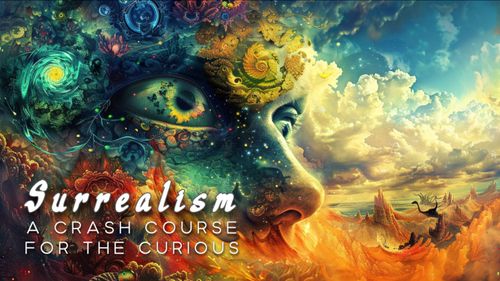Melting Clocks and Flying Fish: A Brief Guide to Surrealism
Feb 27, 2024 · 2 mins read
0
Share
Surrealism is where dreams crash-land into reality. The movement's aim? To revolutionise human experience. Has it been successful? Let's find out...
Save
Share
Born from the ashes of WWI, Surrealism was a rebellion against reason. Artists like Dalí and Magritte thought logic was overrated. Why not paint the subconscious instead? It's the ultimate "think outside the box."
Save
Share
Salvador Dalí's "The Persistence of Memory" with its melting clocks isn't just weird for the sake of being weird. It's a visual riddle: Time is fluid in the realm of dreams. Ever had a dream where minutes lasted hours? That's what Dalí is expressing.
Save
Share
René Magritte's "The Treachery of Images" shows a pipe with "This is not a pipe" written beneath. It plays with your expectations, right? It's a lesson in looking beyond the obvious, a nudge to question reality.
Save
Share
Surrealism's secret weapon? The "exquisite corpse" game. Artists collectively draw or write, each contributing a piece without seeing the others'. Think of it like a group chat with your subconscious.
Save
Share
Frida Kahlo, often associated with Surrealism, painted her reality, but it was so raw and dream-like, it blurred the lines. Her work screams: "My reality is more surreal than your dreams."
Save
Share
Surrealism wasn't just in galleries; it invaded literature, film, and even psychology. Ever heard of a guy named Freud? Surrealists loved his ideas about dreams and the unconscious mind.
Save
Share
This movement was a middle finger to the mundane, a call to embrace the strange and the irrational. In a world that loves labels, Surrealism reminds us that not everything has to make sense.
Save
Share
Bottom line: Surrealism isn't just an art movement that came and went; it's a mindset. It challenges us to see the extraordinary in the ordinary, to live a little more whimsically.
Save
Share
0
